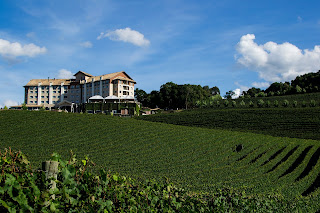A short History of wine in Brazil
Get an online course on winemaking and become an expert of this art!
Introduction
Wine has a rich and fascinating history in Brazil, dating back to the early colonial period when Portuguese settlers first introduced grape vines to the region. Over the centuries, wine production in Brazil has evolved and expanded, with new grape varieties, winemaking techniques, and regions emerging. Today, Brazilian wines are gaining recognition around the world for their quality and unique character.
In this article, we will take a journey through the history of wine in Brazil, exploring its origins, key milestones, and current status as a thriving and innovative wine industry.
Origins of Brazilian Wine
Wine production in Brazil can be traced back to the 16th century when Portuguese settlers brought grapevines to the country. The first vineyards were established in the northeast region of Brazil, where the hot and humid climate provided ideal conditions for growing grapes. These early vines were primarily used to produce sacramental wine for Catholic churches, but soon, winemaking became a popular activity among the Portuguese settlers.
Despite the initial success of wine production in Brazil, the industry faced several challenges in its early years. The tropical climate, combined with a lack of experience and knowledge about winemaking, meant that the quality of Brazilian wine was often inferior to that of European wines. Furthermore, Brazil's distance from Europe made it difficult to import the necessary equipment, expertise, and grape varieties needed to improve wine quality.
Get an online course on winemaking and become an expert of this art!
The Rise of Brazilian Wine Industry
Despite these challenges, the wine industry in Brazil continued to grow and evolve over the centuries. One of the key milestones in the development of Brazilian wine was the arrival of Italian immigrants in the late 19th and early 20th centuries. These immigrants brought with them their winemaking expertise and introduced new grape varieties that were better suited to the Brazilian climate. They also established vineyards in the southern region of Brazil, which offered cooler temperatures and more favorable growing conditions for grapes.
Another significant event in the history of Brazilian wine was the establishment of the São Francisco Valley wine region in the northeast of Brazil in the 1970s. This region, located in the semi-arid interior of the country, was previously considered unsuitable for grape growing due to its hot and dry climate. However, with the help of modern irrigation techniques and grape varieties that were better adapted to the local conditions, winemakers were able to produce high-quality wines from the region.
The São Francisco Valley quickly became one of the most important wine regions in Brazil, known for its unique and innovative wines. Today, the region produces a wide variety of wines, including sparkling, white, and red wines, as well as fortified wines and dessert wines.
Recent Developments and Trends
In recent years, the Brazilian wine industry has continued to innovate and expand, with new grape varieties, winemaking techniques, and regions emerging. One of the most significant developments in the industry has been the increasing focus on sustainability and organic winemaking practices. Many Brazilian wineries are now using sustainable farming methods and reducing their environmental impact, in addition to producing high-quality wines.
Another trend in the Brazilian wine industry is the growing popularity of sparkling wines. Brazilian sparkling wines are known for their fresh and fruity character, and they have been gaining recognition in international competitions in recent years. Some of the most famous Brazilian sparkling wines come from the Serra Gaúcha region, which is located in the southern state of Rio Grande do Sul.
Get an online course on winemaking and become an expert of this art!
Conclusion
In conclusion, the history of wine in Brazil is a rich and diverse one, spanning centuries of evolution and innovation. From its humble beginnings as a sacramental wine produced by Portuguese settlers, Brazilian wine has grown into a thriving industry known for its unique character and high quality. With new grape varieties, winemaking techniques, and regions emerging, the future of Brazilian wine looks bright, and we can expect to see continued growth and innovation in the years to come.





Comments
Post a Comment